-
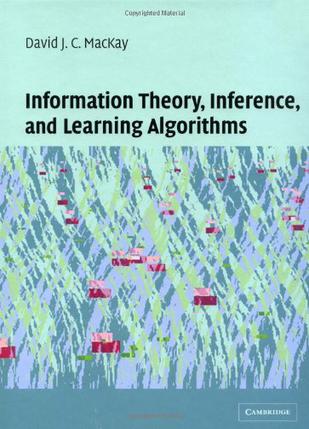
Information Theory, Inference and Learning Algorithms
Information theory and inference, taught together in this exciting textbook, lie at the heart of many important areas of modern technology - communication, signal processing, data mining, machine learning, pattern recognition, computational neuroscience, bioinformatics and cryptography. The book introduces theory in tandem with applications. Information theory is taught alongside practical communication systems such as arithmetic coding for data compression and sparse-graph codes for error-correction. Inference techniques, including message-passing algorithms, Monte Carlo methods and variational approximations, are developed alongside applications to clustering, convolutional codes, independent component analysis, and neural networks. Uniquely, the book covers state-of-the-art error-correcting codes, including low-density-parity-check codes, turbo codes, and digital fountain codes - the twenty-first-century standards for satellite communications, disk drives, and data broadcast. Richly illustrated, filled with worked examples and over 400 exercises, some with detailed solutions, the book is ideal for self-learning, and for undergraduate or graduate courses. It also provides an unparalleled entry point for professionals in areas as diverse as computational biology, financial engineering and machine learning. -
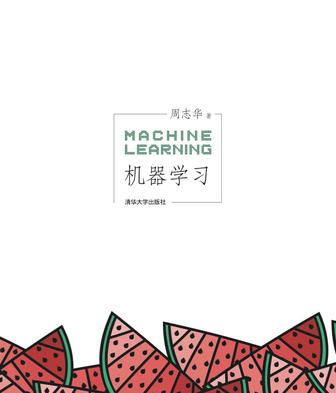
机器学习
机器学习是计算机科学与人工智能的重要分支领域. 本书作为该领域的入门教材,在内容上尽可能涵盖机器学习基础知识的各方面。 为了使尽可能多的读者通过本书对机器学习有所了解, 作者试图尽可能少地使用数学知识. 然而, 少量的概率、统计、代数、优化、逻辑知识似乎不可避免. 因此, 本书更适合大学三年级以上的理工科本科生和研究生, 以及具有类似背景的对机器学 习感兴趣的人士. 为方便读者, 本书附录给出了一些相关数学基础知识简介. 全书共16 章,大致分为3 个部分:第1 部分(第1~3 章)介绍机器学习的基础知识;第2 部分(第4~10 章)讨论一些经典而常用的机器学习方法(决策树、神经网络、支持向量机、贝叶斯分类器、集成学习、聚类、降维与度量学习);第3 部分(第11~16 章)为进阶知识,内容涉及特征选择与稀疏学习、计算学习理论、半监督学习、概率图模型、规则学习以及强化学习等.前3章之外的后续各章均相对独立, 读者可根据自己的兴趣和时间情况选择使用. 根据课时情况, 一个学期的本科生课程可考虑讲授前9章或前10章; 研究生课程则不妨使用全书. 书中除第1章外, 每章都给出了十道习题. 有的习题是帮助读者巩固本章学习, 有的是为了引导读者扩展相关知识. 一学期的一般课程可使用这些习题, 再辅以两到三个针对具体数据集的大作业. 带星号的习题则有相当难度, 有些并无现成答案, 谨供富有进取心的读者启发思考. 本书可作为高等院校计算机、自动化及相关专业的本科生或研究生教材,也可供对机器学习感兴趣的研究人员和工程技术人员阅读参考。 -
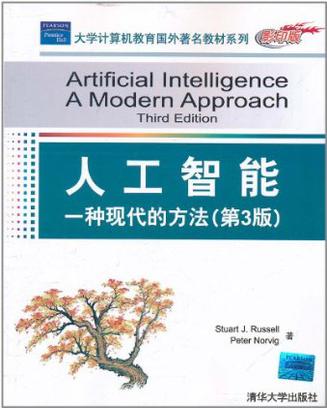
人工智能
《人工智能:一种现代的方法(第3版)(影印版)》最权威、最经典的人工智能教材,已被全世界100多个国家的1200多所大学用作教材。《人工智能:一种现代的方法(第3版)(影印版)》的最新版全面而系统地介绍了人工智能的理论和实践,阐述了人工智能领域的核心内容,并深入介绍了各个主要的研究方向。全书仍分为八大部分:第一部分“人工智能”,第二部分“问题求解”,第三部分“知识与推理”,第四部分“规划”,第五部分“不确定知识与推理”,第六部分“学习”,第七部分“通信、感知与行动”,第八部分“结论”。《人工智能:一种现代的方法(第3版)(影印版)》既详细介绍了人工智能的基本概念、思想和算法,还描述了其各个研究方向最前沿的进展,同时收集整理了详实的历史文献与事件。另外,《人工智能:一种现代的方法(第3版)(影印版)》的配套网址为教师和学生提供了大量教学和学习资料。 《人工智能:一种现代的方法(第3版)(影印版)》适合于不同层次和领域的研究人员及学生,是高等院校本科生和研究生人工智能课的首选教材,也是相关领域的科研与工程技术人员的重要参考书。 -
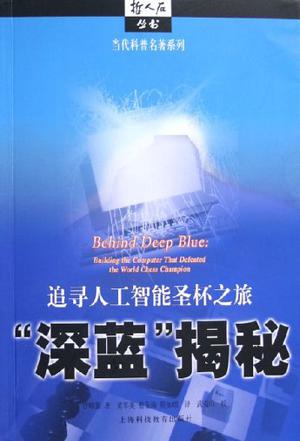
“深蓝”揭秘
1997年5月11日,全世界数百万人通过电视观看了一场惊人的胜利——一台计算机战胜了欲捍卫世界冠军称号的卡斯帕罗夫,此举震惊了国际象棋界。 本书的作者许峰雄是“深蓝”的系统设计师,他避开难懂的术语,以非技术的谈话式的笔触,介绍了在“深蓝”与卡斯帕罗夫两次具有历史意义的弈战背后所发生的故事,披露了一个不起眼的学生课题如何最终转化为价值数百万美元的超级计算机的过程:科学创意的形成,克服重重技术障碍,研制弈棋机过程中的竞争和激烈的争执,最终战胜世界上最伟大的人类棋手。 -
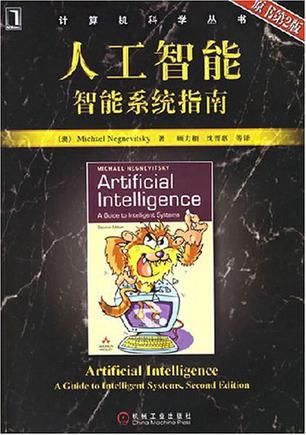
人工智能
人工智能经常被人们认为是计算机科学中的一门高度复杂甚至令人生畏的学科。长期以来人工智能方面的书籍往往包含复杂矩阵代数和微分方程。本书形成于作者多年来给没有多少微积分知识的学生授课时所用的讲义,它假定读者预先没有编程的经验,并说明了智能系统中的大部分基础知识实际上是简单易懂的。 本书目前已经被国际上多所大学(例如,德国的马德堡大学、日本的广岛大学、美国的波士顿大学和罗切斯特理工学院)采用。 如果你正在寻找关于人工智能或智能系统设计课程的浅显易懂的入门级教材,如果你不是计算机科学领域的专业人员,而又正在寻找介绍基于知识系统最新技术发展的自学指南,本书将是最佳选择。 本书是关于人工智能的教科书,浅显易懂、内容全面、案例丰富、参考文献详尽,不仅适合人工智能的初学者学习,而且也非常适合非计算机背景相关学科的研究人员参考。 -
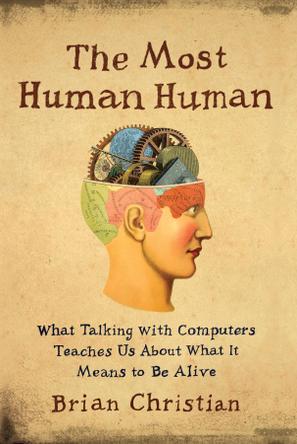
The Most Human Human
The Most Human Human is a provocative, exuberant, and profound exploration of the ways in which computers are reshaping our ideas of what it means to be human. Its starting point is the annual Turing Test, which pits artificial intelligence programs against people to determine if computers can “think.” Named for computer pioneer Alan Turing, the Turing Test convenes a panel of judges who pose questions—ranging anywhere from celebrity gossip to moral conundrums—to hidden contestants in an attempt to discern which is human and which is a computer. The machine that most often fools the panel wins the Most Human Computer Award. But there is also a prize, bizarre and intriguing, for the Most Human Human. In 2008, the top AI program came short of passing the Turing Test by just one astonishing vote. In 2009, Brian Christian was chosen to participate, and he set out to make sure Homo sapiens would prevail. The author’s quest to be deemed more human than a computer opens a window onto our own nature. Interweaving modern phenomena like customer service “chatbots” and men using programmed dialogue to pick up women in bars with insights from fields as diverse as chess, psychiatry, and the law, Brian Christian examines the philosophical, biological, and moral issues raised by the Turing Test. One central definition of human has been “a being that could reason.” If computers can reason, what does that mean for the special place we reserve for humanity?